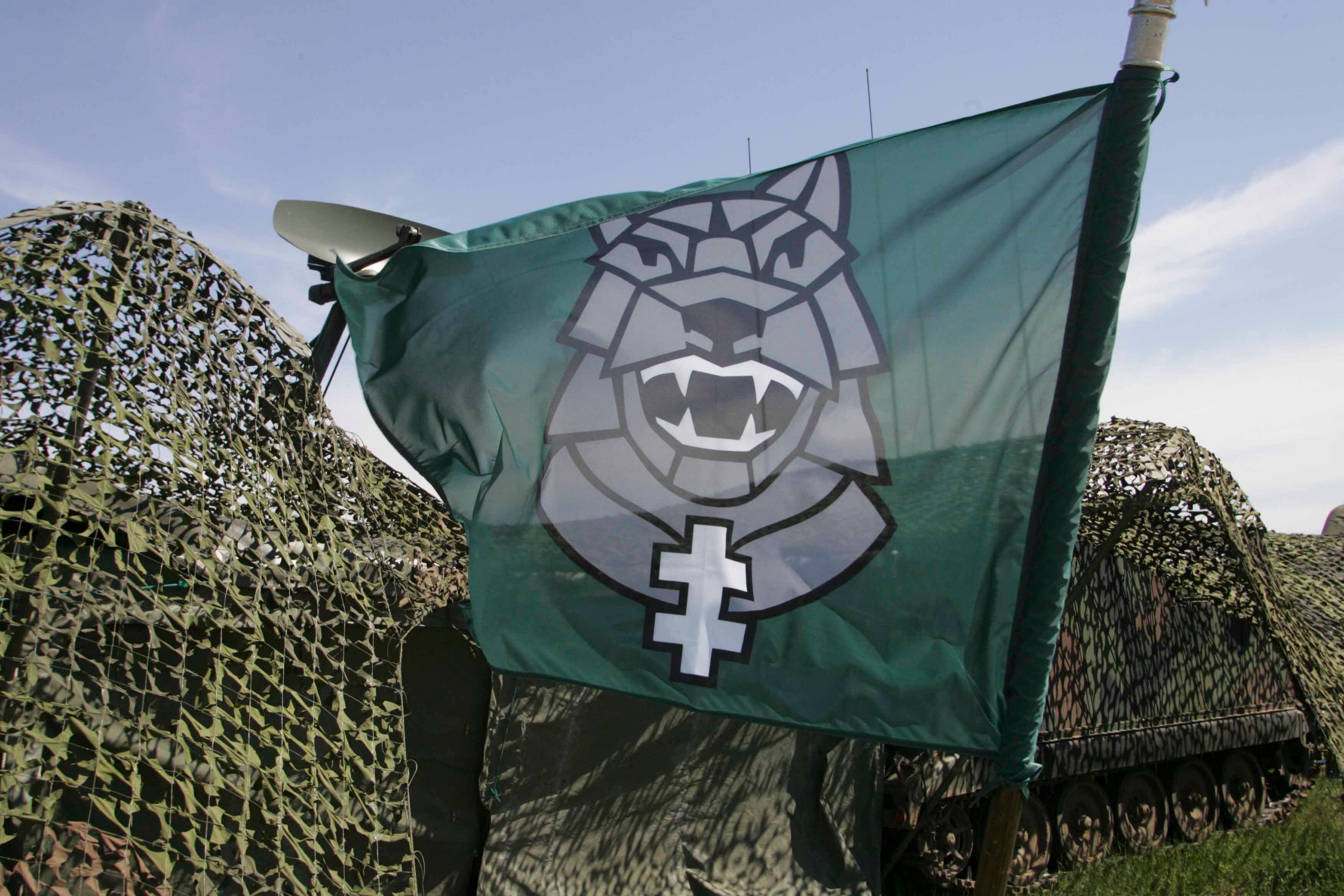VILNIUS, Lithuania — As Russia builds up its military power in Kaliningrad and its Western Military District and gains influence with its neighbor Belarus, Lithuania continues to invest a great deal in the modernization of its defensive capabilities with plans to increase defense spending in the years to come.
Spurred by Russia’s annexation of Crimea, Lithuania embarked on an ambitious modernization plan for its military in 2014. By 2017, the country had doubled its defense spending to more than $800 million, which put it in the top 10 list of defense spenders among NATO allies, measured as a percentage of GDP. In 2016, for example, the country’s investments amounted to one of largest increases within the Alliance, in relative terms.
And while Lithuania reached the NATO-member commitment to spend 2 percent of its GDP on defense in 2018, it won’t stop there, with goals to spend 2.5 percent by 2030.
RELATED

The country also made improvements last year in its acquisition process by standing up a new centralized system and defense resource agency in charge of procuring armaments and managing defense projects with a goal of transparency, according to a Lithuanian Ministry of Defense white paper.
As the overall defense budget continues to rise, Lithuania is planning to spend 25 percent of it on modernization — a total of €2.5 billion — to include acquisition of weapons, equipment and the stockpiling of ammunition through 2022.
Lithuania has embarked on a variety of big modernization projects, officials at the Ministry of Defense told Defense News on a recent trip with the Atlantic Council.
The three largest acquisition programs are the purchase of Boxer infantry fighting vehicles, a mid-range air defense system — the National Advanced Surface to Air Missile System or NASAMS — and PzH2000 self-propelled howitzers from Germany.
RELATED

The country took receipt of the first two Boxer IFVs last month, which were fielded to its mechanized infantry Iron Wolf Brigade, based at Rukla training center.
The current scope of the IFV project is to field two mechanized infantry battalions’ worth of the vehicles, but the country’s ambition is to field IFVs to the entire brigade.
The Boxers are intended to replace the armed force’s M113 armored personnel carriers.
Lithuania is considering buying another round of IFVs but won’t make a decision on requirements or a way forward until it has gathered lessons learned from the Iron Wolf’s experience with the Boxer vehicles around 2021.
The country is leaving its options open regarding possible requirements for a second IFV, which means whether those vehicles would be wheeled like the Boxers or tracked like the M113s has yet to be determined, according to a Lithuanian defense official.
As Russia builds it air defense systems, particularly stationing them close to home in Kaliningrad, Lithuania has focused harder on its own air defense at a variety of ranges.
The Raytheon and Kongsberg-made NASAMS will fulfill the country’s medium-range air defense needs along with the integration of short- and very-short-range air defense assets that are interoperable with U.S. and other allied systems, a Lithuanian defense official said.
The country already has the GROM air defense system — a man-portable system manufactured in Poland — and Stinger missiles integrated into its force structure.
Lithuania is investing over $150 million in the current NASAMS project, but plans to spend over an additional $130 million to reach full operational capability by 2028.
But the country would like to see the U.S. bolster its air defenses with Sentinel radars or Raytheon-made Advanced Medium-Range Air-to-Air Missiles. A defense official said such an enhancement through U.S. support would be “highly appreciated.”
The armed forces are also getting PzH200 howitzers from Germany. The Iron Wolf Brigade took receipt of the first two upgraded howitzers in December 2018. Overall the brigade will get 21 of the 155mm self-propelled systems.
From the United States, Lithuania has decided to procure Joint Light Tactical Vehicles, the U.S. Army’s Humvee replacement, which was cleared for full-rate production in June after a six-month delay.
Now that the Army has approved full-rate production for the JLTV, it is expected that exports could ramp up soon. Slovenia has already placed an order for a small number of JLTVs, and it’s likely the United Kingdom as well as Lithuania will be future customers.
The Ministry of Defense is hoping to sign a contract with the United States for roughly 200 JLTVs by the end of the year, an official said.
Lithuania is considering a follow-on purchase of additional JLTVs — possibly up to 300 more — after the first lot is under contract.
While the country has been focused on increasing its firepower, land-based mobility and air-defense capabilities, it is also considering the possible procurement of utility helicopters to replace its Soviet Mi-8 helicopters.
The U.S. Lockheed Martin-Sikorsky manufactured UH-60 Black Hawk could be a contender, but the country is only in the investigation phase of the program, according to a defense official.
Lithuania is also in the market to replenish its ammunition stocks. The country’s inventory fell particularly during the financial crisis beginning in 2008, when the defense budget decreased.
And some of types ammunition, particularly in the larger calibers, will age out before use based on the current training program schedule, an official noted.
The ministry is engaged in a large effort to reduce the shortage gaps and with the increase in the budget, Lithuania is beginning to invest heavily in replenishment of stocks and training ammunition.
And Lithuania is benefiting from a U.S. decision to allocated $100 million to bolster munition in the three Baltic states.
Simulation is also helping Lithuania manage its training-ammunition shortage. “Lithuania has prepared and is continuously revising simulation plans for training purposes,” an official wrote to Defense News following the trip. “Simulation systems are also procured for the newest equipment and vehicles that will be shortly received by our Armed Forces.”
But it’s not enough just to modernize equipment, so Lithuania is also investing in the ability for its military and its allies to maneuver seamlessly into and through the country, as a timely response in a crisis is as important as the weapons that would arrive to a fight.
Lithuania is working to improve faster re-loading from European to Eastern railway gauges and is upgrading heavy-weight platforms to accommodate the entry of tanks, which Lithuania does not have in its own inventory.
The country is also supporting the European gauge railway which will reach up to the intermodal terminal in Kaunas, in central Lithuania. The line will be ready to support the U.S. Army exercise Defender Europe in 2020. The railway line extension will allow allied armored forces to load trains at Belgian or Dutch seaports and unload them in the middle of Lithuania without stopping to switch gauges.
And Lithuania is improving unloading capabilities at key locations such at the central training area in Pabrade through a joint project with international cooperation.
Jen Judson is an award-winning journalist covering land warfare for Defense News. She has also worked for Politico and Inside Defense. She holds a Master of Science degree in journalism from Boston University and a Bachelor of Arts degree from Kenyon College.







